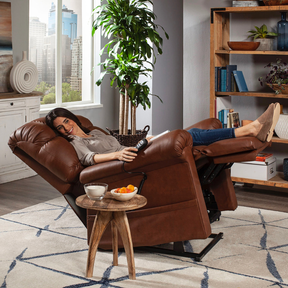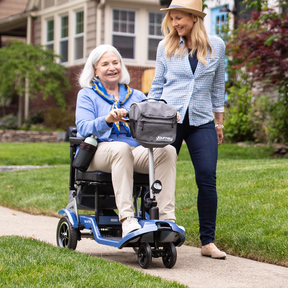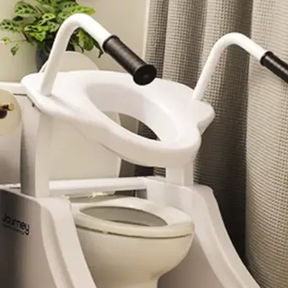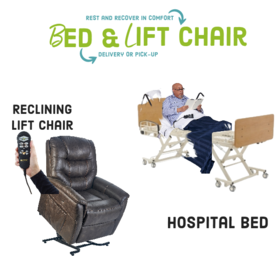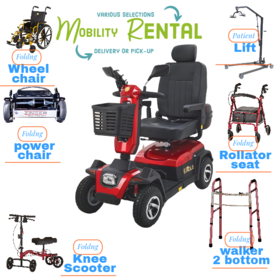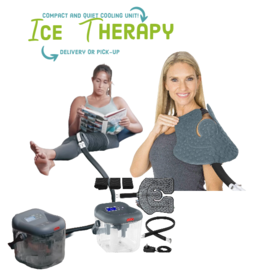Blog How to select the right hospital bed you need for home use?

Sleep, or lack thereof, has molecular effects on the brain and body. It affects mood, mental acuity, energy balance, and alertness. A good night's sleep is essential for optimal health and performance. People who use hospital beds at home frequently suffer from illnesses, pain, and drug side effects, all of which can interfere with getting a good night's sleep. The correct bed can help you get restful sleep, which benefits your general health. This article comprises what a home hospital bed and different types of hospital beds are. Additionally, it warns you about crucial elements you must consider before purchasing.
What is a home hospital bed?
The characteristics of a hospital bed for home care are designed to meet the requirements of patients who are healing from an injury or who must spend a lot of time in bed. They are more suitable than a typical bed for offering comfortable support and enabling carers to provide high-quality care because of their adaptability. Here are the three different kinds of hospital beds;
Manual Hospital Beds
The least-priced kinds of hospital beds are manual ones, with fewer features than semi-electric or full-electric alternatives. Manual hospital beds must be adjusted by a caregiver using a hand crank; hence, they are best used when frequent modifications won't be required.
Semi-Electric Hospital Beds
A semi-electric hospital bed is an excellent option if a patient has sufficient balance to avoid raising or lowering the bed to get on and off. The head and foot parts of this type of bed often have electrical adjustments while the height is changed using a manual crank.
Full Electric Hospital Beds
The height, head, and foot adjustments on a fully electronic hospital bed are performed by pressing a button. A patient's need for caregiver help lessens, and their sense of freedom and security increases if they control how their bed is positioned. Most full-electric beds have a locking feature that prevents the bed from moving accidentally into a dangerous position if a caregiver is not around.
Features to Take into Account Before Buying
Permanent vs. Temporary
Full-electric home hospital beds will offer long-term comfort and durability while reducing physical strain on caregivers if a user is going to be cared for in bed for an extended period or spends more than 15 hours a day in bed. Additionally, these are the priciest models. Although manual and semi-electric beds are more labor-intensive for caregivers to operate and allow patients less independence, they are less expensive. They may be better suited for temporary use.
Movement of the Patient
The patient's mobility greatly impacts the kind of home hospital bed that should be selected. For users who are unsteady on their feet and at risk of falling when transferring in and out of bed, who can't reposition themselves without assistance, and who can't get in and out of bed securely without the height being adjusted, a highly adjustable bed, either electric or semi-electric, is recommended. A highly adjustable bed may not be required if the patient can stand unaided and independently get in and out of bed. A manually adjustable bed would be a more cost-effective option.
Power of the Caregiver
Consideration of caregiver demands will help to ensure that the right amount of care can be offered. A manual bed would be better for patients who need to shift positions frequently. The most stress can be relieved by an electric bed for a caretaker. Which home hospital bed is the best option should be determined by the strength and endurance of the carer.
Dimensions of the Patient
For heavier users, a bariatric bed with a special design broader than a conventional bed is more comfortable. Pediatric patients will feel safer and more at ease in a child-sized bed. Additionally, beds can be ordered to fit particularly tall people. There is a bed available in the patient's preferred size.
Positioning
The positioning characteristics of a hospital bed can significantly impact comfort and sleep quality for patients who spend most of their time in bed, particularly if mobility issues prohibit them from regularly self-repositioning. The user experience is influenced by the number of portions, position possibilities, and height adjustments. The most popular positioning choices are as follows:
Trendelenburg: The patient is lying on their back with her head and feet lowered. In a therapeutic setting, this position raises heavy patients onto the bed, treats low cardiac output, implants central IV catheters, promotes postural drainage, and reduces leg swelling. Additionally, it makes it easier to install venous catheters.
- Reverse Trendelenburg:
The patient lies supine, and their head is raised above their heart and legs in a reverse Trendelenburg position. It helps reduce blood loss during head and neck procedures and can also be used to lower blood pressure.
- Comfort Chair:
A hospital bed that allows a patient to go from a flat position to a sitting posture at a controlled rate with little patient movement helps to relieve lung pressure and promotes blood flow. The chair position uses components that support the patient's back, bottom, arms, and legs and calls for a four-function bed.
- Fowler's Posture:
The Fowler's Posture is a conventional position in which the patient is seated with their legs either bent or straight at an angle between 30 and 90 degrees. As the top of the bed is raised, it aids in chest expansion and is frequently used to encourage breathing and oxygenation.
Service for Assembly
Setting up a hospital bed at home is simplified and eliminated with the help of optional assembly services. Bringing a hospital bed home is probably already a difficult time of transition, but knowing that trained installers have carefully installed the bed can help reduce some of that anxiety and provide a calmer and more pleasant environment.
Tags
- contest
- event
- supplies
- design
- brand
- video
- Compression
- upright walker
- four wheel walker
- rollator
- wheelchair
- Ostomy
- elegantly
- elegantly
- accessibility
- Mobility
- knee walker rental
- knee scooter sales
- knee scooter
- post operative shoe
- anti-embolic stockings
- pain management
- cryotherapy therapy
- hot cold compress
- compression stockings
- lift chair
- wound Care
- air purifier
- fall prevention
- cushion
- oxygen therapy
- cpap, bipap
- Hospital Bed
- Life Aide
- EMS
- recovery
- splint
- knee brace
- Bathroom
- patient lift
- medical supply
- Wound dressings
- Lightweight Wheelchair
- hospital beds for sale
- sky medical supplies rentals
- compression socks
- Adult Diapers
- Rollator Walker
- Bed Wedge Pillow
- Hospital beds
- Patient Lifts and Slings
- Portable Oxygen Concentrator
- Patient Lift Slings
- knee scooter rental
- folding mobility scooter
- mobility scooter
- medical shoes
- raised toilet seat
- hospital beds for rent
- lift chair recliner
- chair lift
- electric wheelchair
- Power Lift Recliners for Elderly
- Senior Walkers
- Bedside Commodes
- whill wheelchair
- compression hose
- Whill Electric Wheelchairs
- Bariatric Wheelchair
- Recliner Chairs with Lift
- Colostomy Bag
- Crutches
- Medical Wedge Pillow
- skin barrier tape
- Post Surgery Ice Machine
- Bedside Commode
- chair lift recliners
- cane holder scooter
- lift chair prices
- drop arm commode
- rollator walker with ergonomic seats
- Hospital Bed Rental
- Wheelchair Tray
- Golden Technologies Lift Chair
- Nova GetGo Junior Rollator
- power lift recliners
- Knee Scooters and Crutches:
- stand up walker for seniors
- stand up walker as seen on TV
- Women's Walking Canes
- Knee Immobilizers
- Bed Wedge Pillow
- Medical Supply Stores
- Sit to Stand Lifts
- Grab Bars
- Compression Gloves
- incontinence bed pads
- Lift Reclining Chair
- Knee Walker Scooters
- Hernia Belt Near You
- Mobility Scooter Stores Near Me
- Folding Knee Walker
- Oxygen Concentrator Store
- Inogen Battery
- Electric Bed Frames
- Placing Lift Chair
- diaper brief
Related Posts
Get weekly articles in your inbox on the latest medical supply news, exclusive deals, and helpful health tips.
